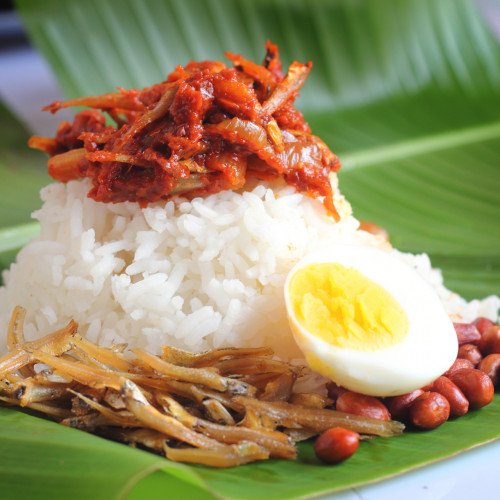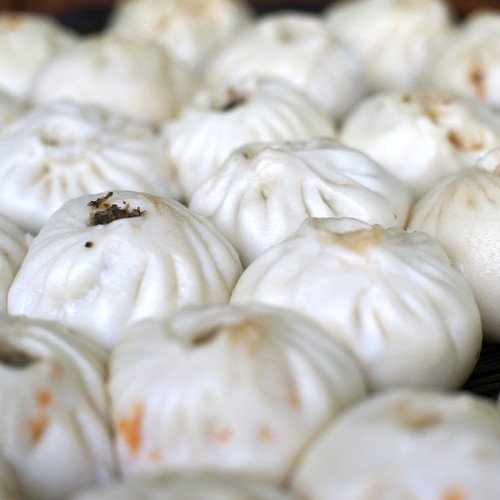Do you prefer Nasi Lemak or Bun as breakfast?

Nasi Lemak
椰浆饭是在马来西亚、新加坡与汶莱常见的美食,是马来西亚的非正式国肴。椰浆饭的马来文是“nasi lemak”,“nasi”意为饭,lemak本意是油脂,这里指的是椰浆;就是把米浸泡在椰浆裡后再煮成饭而得名。一般可用普遍锅子或电饭锅;有时候也会将打了个结的班兰叶放入锅裡一起煮,亦可加入香料如黄薑、香茅以增加椰漿飯的香味。 传统上,一盘椰浆饭裡要有黄瓜切片、小江鱼仔、烤花生、已搅炸过的蕹菜、全熟蛋(水煮蛋或煎蛋)、印度式腌菜与參峇醬(一种由虾酱与辣椒制成的酱料)。椰浆饭也可以有别的佐料,如鸡肉、章魚或乌贼、鸟蚌、印度脆饼、牛肉咖哩(把牛肉焖在椰浆与香料的混和物)或“巴鲁”(牛肺)。传统上,大多数的佐料是热辣性质的以及清凉解热的黄瓜。 椰浆饭传统上是用来当早餐吃的,在清晨开始就在马来西亚的路边档口贩卖,现在在菜市档口或店家都有售卖。通常是以报纸、油纸或香蕉叶包住卖的。无论如何,也有些餐厅把它盛在盘上当午餐或晚餐吃。
Statistics for this Xoptio

Bun
aozi (Chinese: About this sound包子), or bao, is a type of yeast-leavened filled bun[1] in various Chinese cuisines. There are many variations in fillings (meat or vegetarian) and preparations, though the buns are most often steamed. They are a variation of mantou from Northern China. Two types are found in most parts of China and Indonesia: Dàbāo (大包, "big bun"), measuring about 10 centimetres (3.9 in) across, served individually, and usually purchased for take-away. The other type, Xiǎobāo (小包, "small bun"), measure approximately 5 centimetres (2.0 in) wide, and are most commonly eaten in restaurants, but may also be purchased for take-away. Each order consists of a steamer containing between three and ten pieces. A small ceramic dish for dipping the baozi is provided for vinegar or soy sauce, both of which are available in bottles at the table, along with various types of chili and garlic pastes, oils or infusions, fresh coriander and leeks, sesame oil, and other flavorings. They are popular throughout China.